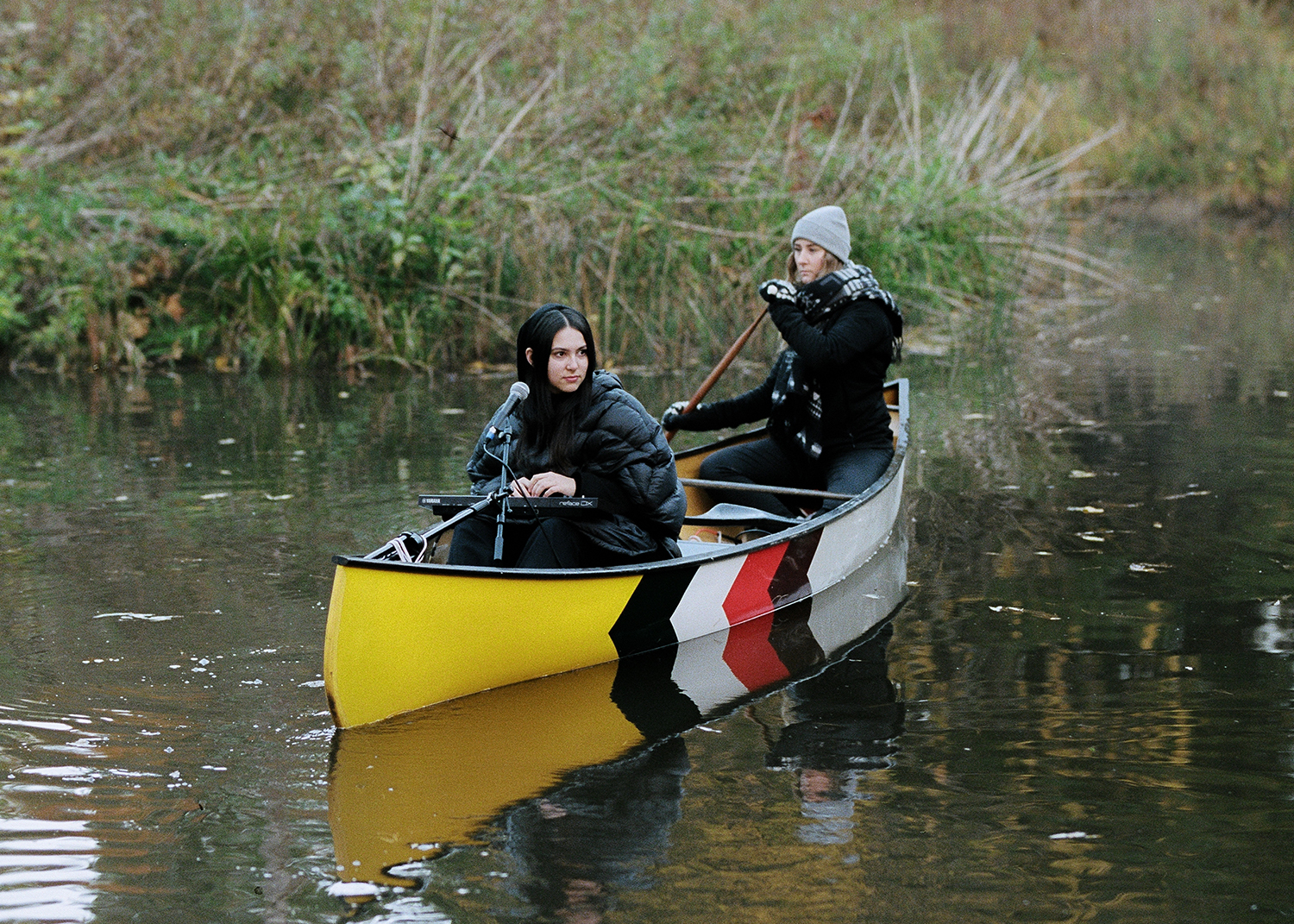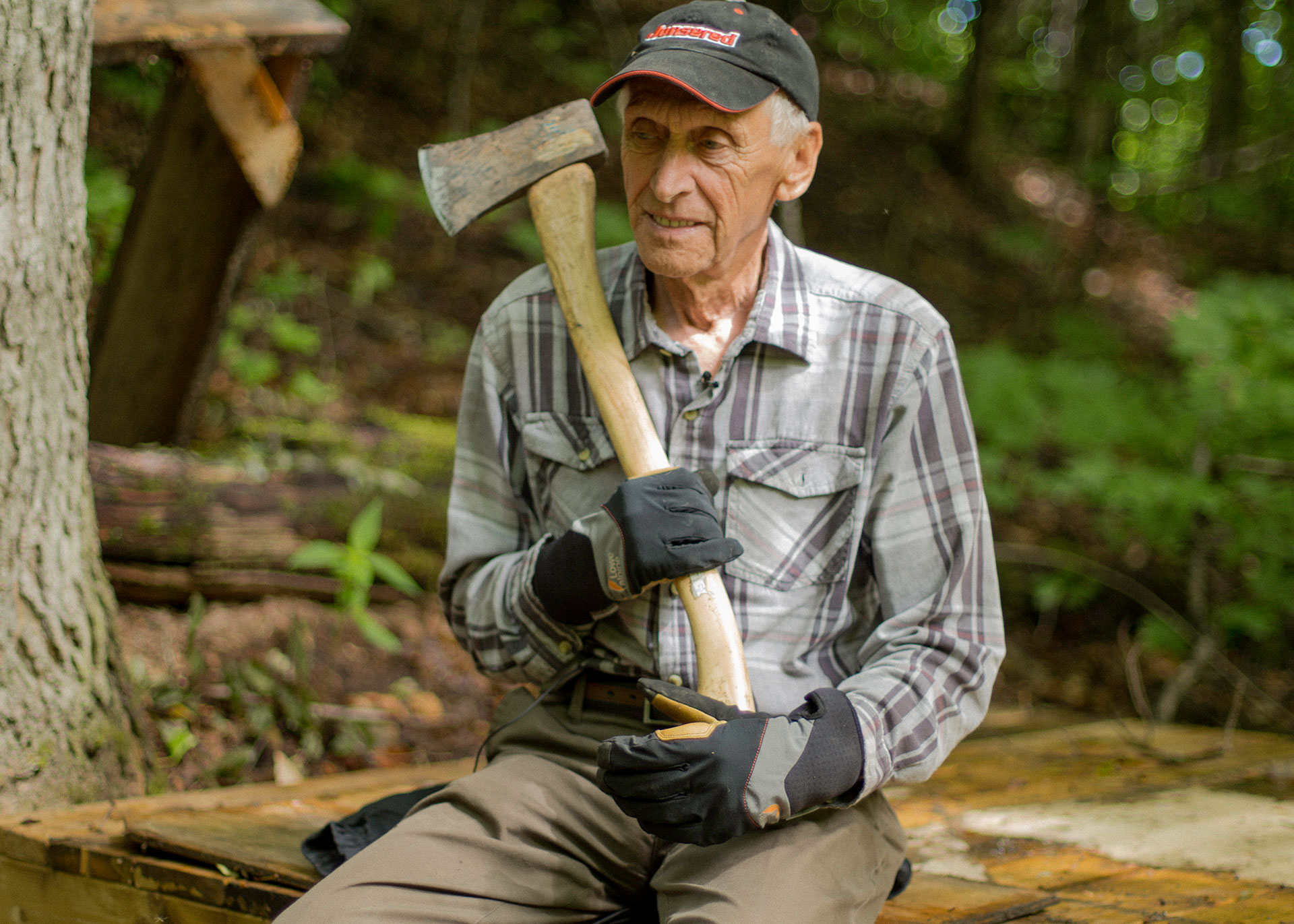Visual Essays
Reclaiming the Rails
What originated as a tool of resource extraction and exploitation, this First Nations-run railway provides a lifeline and a mobile community for the remote communities it serves.
Twice each week Tshiuetin passengers arrive at the Sept-Îles train station in the Côte-Nord region of eastern Québec, before the sun has risen.
Among them are families returning home to Schefferville or Kawawachikamach, Innu passengers from nearby Maliotenam or Uashat travelling to their hunting grounds, students setting out on wilderness education excursions, and the odd adventurer riding the train on the way to a remote canoeing or ice climbing voyage. By 7:30 a.m., ticket holders, many grasping the last Tim Hortons coffees and donuts they’ll see until they take another trip south, have started to file through the gate. With this train functioning as the only affordable means of transportation in the region, most passengers have been aboard countless times, and they come prepared; they have blankets and sheets to construct living room-like spaces for their families, tablets for shows and games. Before the train leaves the station, each train car will have been converted into a series of homes away from home, transforming the train into its own temporary microcommunity. Passengers know what lies ahead: a 650 km (over 400 mile) journey through the boreal forest and into the tundra, on a train trip scheduled for 12 hours that rarely arrives on time.


Built to facilitate the iron-ore mining industry, the railway running between Sept-Îles and Schefferville, Québec, faced an uncertain future when the mines closed in the early 1980s. No longer in need of much of its infrastructure in Schefferville, the Iron Ore Company of Canada (IOC) dismantled much of what it had built when it left the community. Equally useless to them was the northern portion of the railway, which had become a lifeline for the residents of this otherwise fly-in community. In 2005 the Innu and Naskapi nations on either end of the railway took over management of the 217 kilometres (135 miles) of railway connecting Emeril Junction, Labrador, and Schefferville. Now called Tshiuetin (which translates from Innu as “wind of the north”), this once IOC-controlled railway now employs 85 per cent First Nations staff.

Tshiuetin, a means of transportation created by the mining industry, now serves the people it once exploited, and stands as a powerful symbol of resilience and self-determination.
Kawawachikamach resident Shane Vollant-Einish can’t imagine his community without the Tshiuetin train. “The train is an artery for the lifeblood of businesses and people of both communities,” he says. “Without it, things would be much more expensive and difficult to obtain, especially since we are an inland community unlike other remote towns who usually rely on ships since many of them are on the coast.”

The northern land traversed by the Tshiuetin train, like the railway itself, has a fraught history. For passengers like Françoise Vollant the journey is a political act. “For as long as I can remember my family and I have used the train,” says Vollant. “I strongly believe that this train belongs to us.”

Tshiuetin’s history is front and centre for many, but for others the train is just a way to get home. “For me, the train always meant an adventure,” says Vollant-Einish. “I was either taking it to Sept-Îles and springboarding to other countries or provinces from there, or it was a way to spend time on my ancestral land to hunt and fish,” he says.

“And nowadays, as I travel more and more, the train represents home. It’s more or less the last leg of my journey back to my community and to my family and childhood friends.”
— Shane Vollant-Einish
As the train rolls into its terminus, the porch lights of Schefferville can be seen to the east across Knob Lake; a cross is illuminated on the hill to the west. The overhead fluorescent lights abruptly return, kids are woken up from their naps, blankets are folded and baggage is assembled. Pickup trucks wait outside the Schefferville station, ready to take passengers back to their daily life. But it’s only a matter of time before more diapers are needed from Walmart, building supplies are required for a cabin renovation, or another family holiday is scheduled, and it is once again time to board the Tshiuetin train.

















